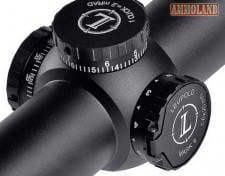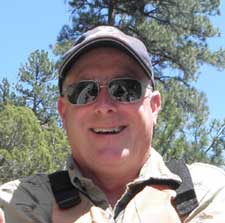
Lansing, Michigan -(Ammoland.com)- What universal lesson can a bag of charcoal teach about precision shooting?
Allow me to explain. Years ago early in life, I was instructed by a grilling “expert” to pile charcoal in a pyramid shape and then soak the briquettes in lighter fluid and let the concoction sit for a minute or two before lighting.
Then we’d wait for the fluid to burn off and for the coals to get ready for cooking. Sound familiar? The trouble was that invariably the food would be spoiled by the taste of fuel.
Decades later, I decided to follow the instructions on the bag, which stated in bold letters to apply charcoal lighter to the coals and light immediately. No more fuel marinade. Duh!
Without understanding the fundamentals, it was impossible to get good results on the barbecue.
The same can be said of rifle scopes and the issue of parallax.
Webster defines parallax as the apparent change in the position of an object resulting from the change in the direction or position from which it is viewed. Relative to viewing an object through a rifle scope, parallax should be checked at the magnification to be used. Parallax is present if the rifle is on a steady rest with the scope’s reticle (crosshairs) on a distant point, and the reticle appears to move about when you move your eye back and forth or up and down.

If you have a scope without an adjustable parallax setting – either at the objective (forward) lens or a side-mount version – there’s nothing that can be done about parallax other than to shoot targets at the distance of the scope’s preset parallax setting – typically between 100 to 200 yards.
The good news is that scopes without parallax adjustment, which are below 7 power magnification, rarely have more than two inches of parallax at a distance of up to 400 yards. When used on big game with kill zones the size of soccer balls parallax is inconsequential at typical hunting distances.
However, scopes with higher magnification and less depth of field require parallax adjustment to be accurate.
The crucial step in setting up a scope for a particular user begins with the diopter setting found at the ocular lens (the one near your eye). The trick is to view a clean background such as the sky or a white piece of paper but actually checking to see if the reticle appears sharp to your eye without staring into the scope; you want the reticle to be focused, as soon as you look at it. Otherwise, your eye will naturally adjust to a reticle that’s focused improperly, making you believe you are all set.
You must perform this adjustment correctly to move on to the next step: parallax adjustment.
Rifle Scope Parallax Adjustment
If you have a parallax adjustable scope ( https://goo.gl/VL41tX ) with all the settings from 25 yards to infinity, forget about the graduations. When you adjust the scope’s diopter correctly for your vision, you will have changed the parallax relative to the numerical values; in other words, those numbers are only a guide and will typically not make your scope parallax free at a given magnification and prescribed setting.
The only way to get it right is to turn the parallax setting until your target is crisp and clear and you’ve actually looked for parallax by moving your eye around. Purchasing an expensive telescopic sight with high magnification and parallax adjustment has the potential to be counter-productive, if the setup is not performed properly.
It’s a bit more complicated than lighting charcoal, but without the fundamentals of scope adjustments, the results can be just as bad.
About Glen Wunderlich:
Charter Member Professional Outdoor Media Association (POMA). Outdoor writer and columnist for The Argus-Press (www.argus-press.com) and blog site at www.thinkingafield.org Member National Rifle Association (NRA), Michigan United Conservation Clubs (MUCC), member U.S. Sportsmen’s Alliance (USSA), Quality Deer Management Association (QDMA), Commemorative Bucks of Michigan (CBM).


That’s about as clear of an explanation on Parallax as I have ever read. Good job.
I have found — as I believe stated in the article — that the factory distance numbers on the parallax knob are just general estimates and not for the reality of that scope. I bring my rifle and new scope to a range and etch the Parallax knob with a tungsten scribe tool for I , (one hundred) II, (two hundred) III (three hundred) yards, etc.